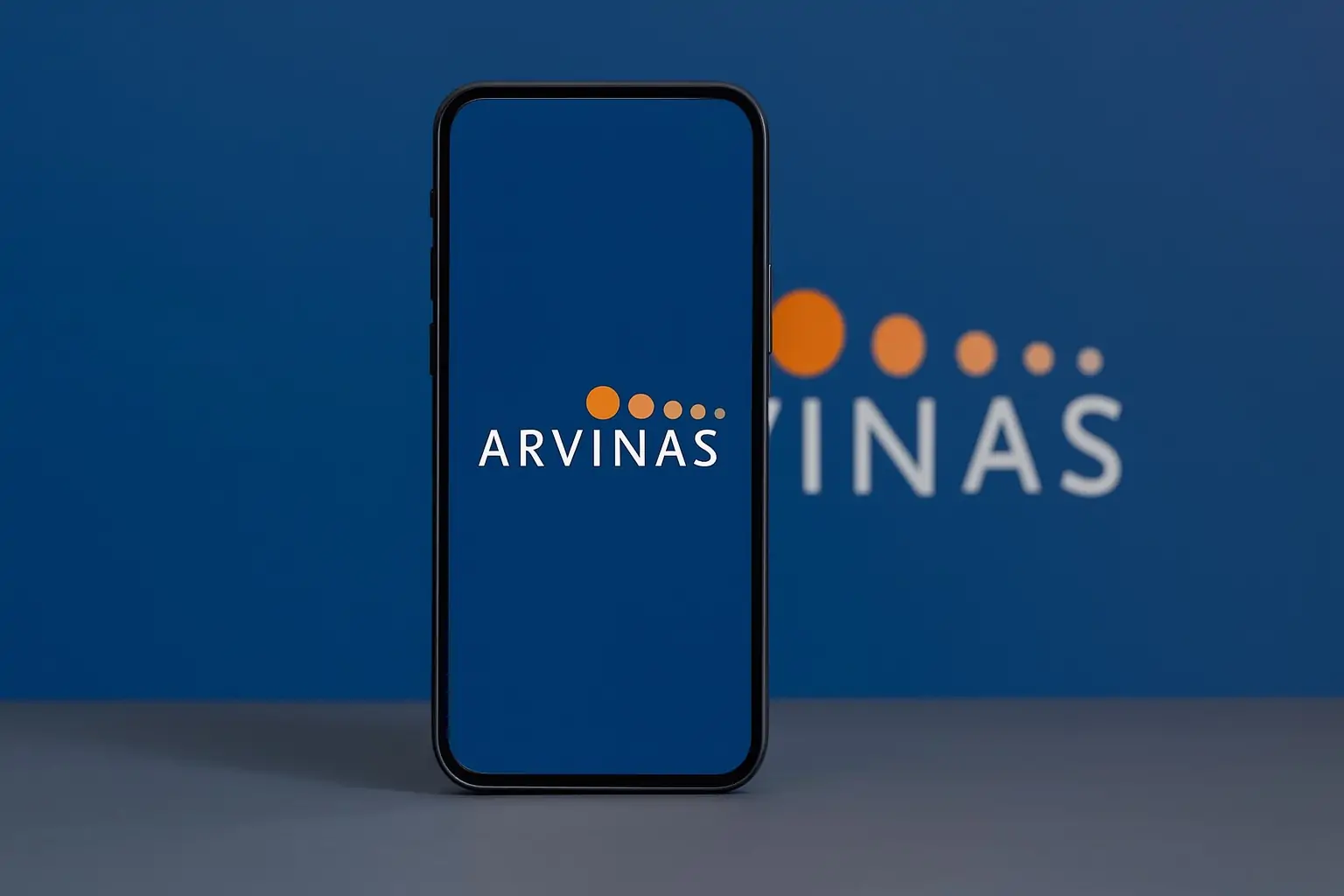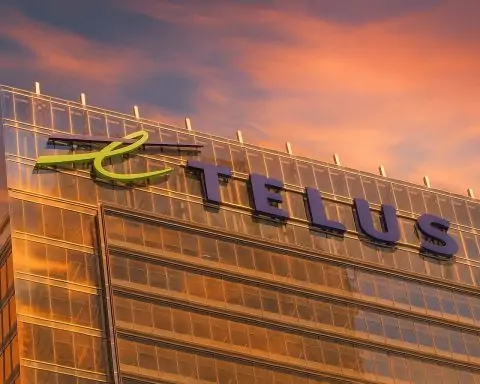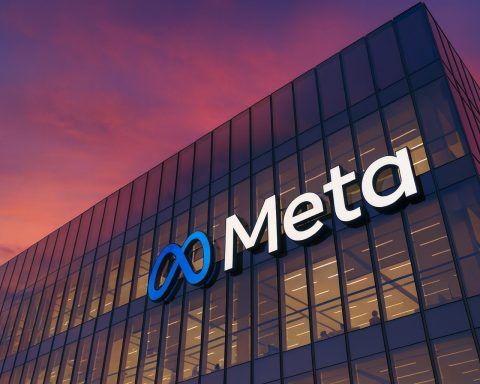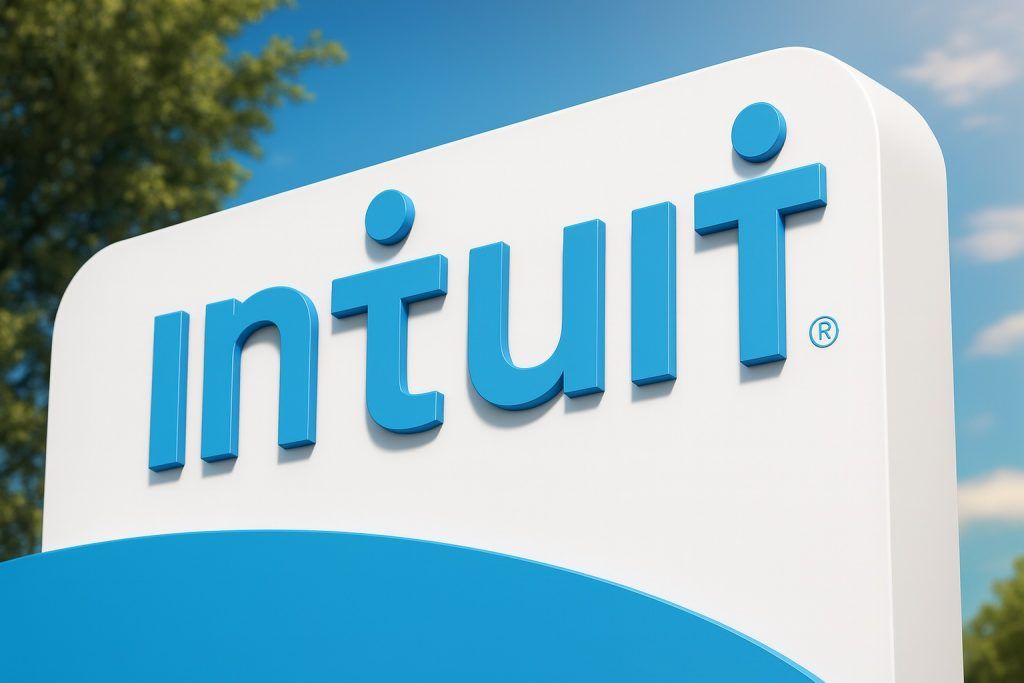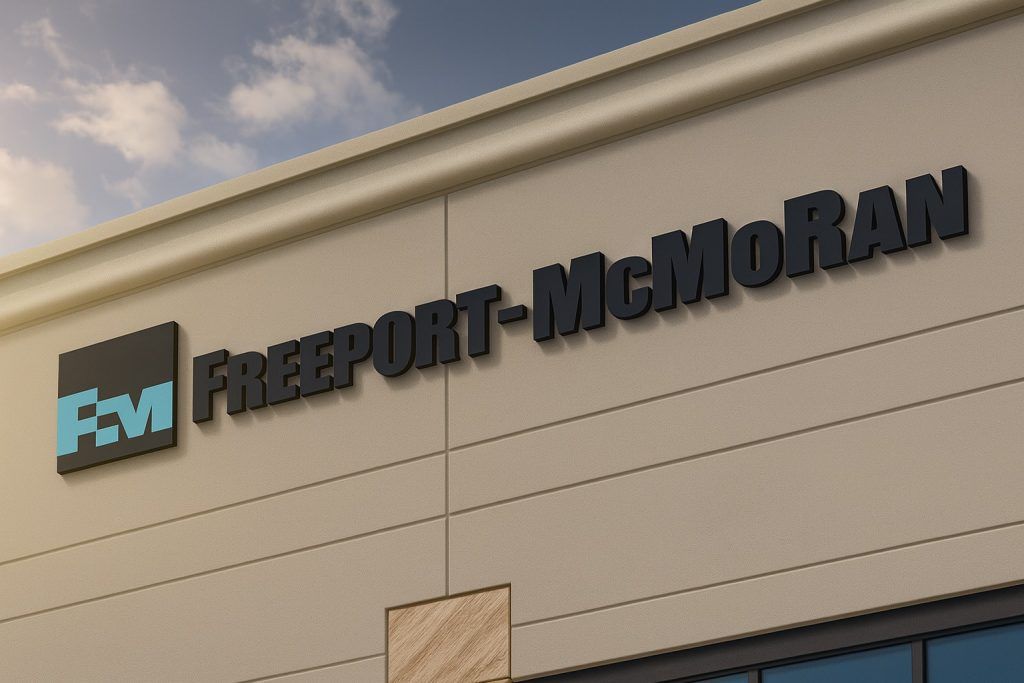Arvinas (NASDAQ: ARVN) jumped in double digits on November 18, 2025 amid a focused pipeline reset, FDA momentum for vepdegestrant and attention at the Jefferies London Healthcare Conference.
- ARVN is ripping higher today. Arvinas shares are up more than 14% intraday, trading around the low‑$13 range on heavy volume, after opening sharply above Monday’s $11.04 close and appearing among the day’s top healthcare movers. [1]
- The stock has rebounded but still sits well below past highs. With a 52‑week range of $5.90–$27.00, today’s move puts ARVN roughly in the middle of that band. [2]
- Q3 2025 marked a strategic reset. Arvinas beat revenue and EPS expectations, reported $787.6 million in cash and equivalents, and guided its cash runway into the second half of 2028, while emphasizing early‑stage PROTAC degraders over later‑stage oncology assets. [3]
- Pipeline leadership has shifted. Neurology and next‑gen oncology programs — ARV‑102 (LRRK2), ARV‑393 (BCL6), ARV‑806 (KRAS G12D) and new candidate ARV‑027 — now sit at the center of the story, while breast‑cancer drug vepdegestrant is being prepared for commercialization by a third party. [4]
- Vepdegestrant remains a major potential catalyst. The FDA has accepted its New Drug Application and set a PDUFA action date of June 5, 2026, positioning it to become the first PROTAC drug on the market if approved. [5]
- Cost savings and buybacks come with layoffs. Arvinas is cutting its workforce by a further 15%, targeting >$100 million in annualized cost savings and authorizing up to $100 million in share repurchases — a mix of shareholder‑friendly moves and restructuring pain. [6]
ARVN stock pops on November 18, 2025
Arvinas shares are in rally mode this Tuesday. By mid‑afternoon U.S. trading, ARVN is up more than 14% on the day, with intraday prices hovering around the low‑$13 level and turnover far above normal. [7]
Pre‑market data set the tone: ChartMill flagged Arvinas as one of the most active names before the bell, with premarket quotes around $13.60, up more than 23% from the prior close. [8] A Benzinga rundown of “12 Health Care Stocks Moving in Tuesday’s Pre‑Market Session” likewise highlighted Arvinas up ~17.8% to $13.00 ahead of the open. [9]
As regular trading progressed, Quiver Quantitative reported that ARVN had gained 14% on the session with roughly $45 million in trading volume, underscoring the strength of the move relative to its typical ~2.5 million‑share average daily volume. [10]
From a technical standpoint, Investors Business Daily also flagged Arvinas this morning for hitting a Relative Strength Rating of at least 80, a level growth‑oriented traders often treat as a confirmation of improving momentum. [11]
All of this is happening against the backdrop of a 52‑week low of $5.90 and a high of $27.00, with today’s levels still far below where the stock traded during earlier waves of enthusiasm for its PROTAC platform. [12]
What’s actually new today: November 18 news round‑up
Several pieces of fresh information and attention are converging on Arvinas today:
- Momentum & flow headlines. Quiver Quantitative published a same‑day note titled “$ARVN stock is up 14% today. Here’s what we see in our data.” The piece highlights the double‑digit price move, elevated trading volume, recent insider trades (including a sizable open‑market purchase by board member Briggs Morrison) and shifts in institutional positioning. [13]
- Pre‑market movers lists. Both ChartMill and Benzinga’s pre‑market screens called out ARVN among Tuesday’s most active healthcare names, a signal that short‑term traders are now watching the stock closely. [14]
- Fresh pipeline framing. A new brief from Quartr, syndicated via TradingView, describes Arvinas as having “prioritized five early‑stage assets, with LRRK2 and PSP leading the pipeline and major data and partnership milestones expected by 2026,” while vepdegestrant is “actively partnered” and cash is projected to last into 2028. [15]
- Real‑time stock dashboards. Market‑data hubs like StockTitan and Benzinga have updated pages showing ARVN around $13.00–$13.20, up nearly 19% at one point in the morning and with an implied market cap in the high‑$600 million range. [16]
None of these is a brand‑new clinical or regulatory bombshell. Instead, today’s move looks like the market re‑rating the story in light of last week’s Q3 update, the September strategic overhaul and growing visibility around upcoming catalysts, amplified by technical momentum and heightened trading interest.
A focused pipeline: neurology and next‑gen oncology step forward
Arvinas is best known for its PROTAC (PROteolysis TArgeting Chimera) protein degrader platform, which is designed to tag disease‑causing proteins for destruction by the cell’s natural disposal systems. [17]
In its November 5, 2025 Q3 earnings release, the company highlighted a clear strategy: lean harder into earlier‑stage, wholly owned PROTAC programs while de‑emphasizing capital‑intensive late‑stage work and partnering out vepdegestrant. [18]
Key programs now in focus:
ARV‑102 – Oral LRRK2 degrader for Parkinson’s & PSP
ARV‑102 is an orally available, brain‑penetrant PROTAC that degrades LRRK2, a kinase implicated in both Parkinson’s disease and progressive supranuclear palsy (PSP). [19]
In Q3, Arvinas reported detailed Phase 1 data:
- In healthy volunteers, repeated daily doses of ≥20 mg led to >90% reduction of LRRK2 in blood and >50% reduction in cerebrospinal fluid, with clear evidence of brain penetration and modulation of downstream biomarkers. [20]
- In a single‑dose study in Parkinson’s patients, ARV‑102 showed dose‑dependent exposure in plasma and CSF, with median LRRK2 reductions of 86% at 50 mg and 97% at 200 mg, and was generally well tolerated. [21]
Arvinas plans to:
- Start a Phase 1b trial in PSP in 1H 2026, and
- Share additional multiple‑dose Parkinson’s data in 2026, positioning ARV‑102 as a potential first‑in‑class degrader in neurodegeneration. [22]
ARV‑393 – BCL6 degrader in relapsed/refractory non‑Hodgkin lymphoma
ARV‑393 targets BCL6, a transcriptional regulator that helps malignant B‑cells survive and proliferate; it’s considered “traditionally undruggable,” making degradation an attractive approach. [23]
Recent updates include:
- Early data from a first‑in‑human Phase 1 trial in relapsed/refractory non‑Hodgkin lymphoma have shown responses in both B‑cell and T‑cell lymphomas, though dose escalation is ongoing to reach the exposure levels seen as most promising in preclinical work. [24]
- On November 3, Arvinas announced it will present preclinical ARV‑393 data in combination with Roche’s bispecific antibody glofitamab at the ASH 2025 meeting in Orlando on December 6, teeing up combination strategies for aggressive DLBCL. [25]
Updated clinical data from the ARV‑393 Phase 1 trial are expected at a medical conference in 2026. [26]
ARV‑806 – KRAS G12D degrader for solid tumors
ARV‑806 is an intravenous PROTAC designed to degrade KRAS G12D, a notoriously tough oncogenic driver seen in subsets of pancreatic, colorectal and lung cancers. [27]
In Q3, Arvinas highlighted:
- Preclinical results showing selective, durable KRAS G12D degradation (>90% for seven days after a single dose) and strong tumor regressions across multiple models. [28]
- In‑vitro potency roughly 25× greater than KRAS inhibitors and 40× greater than the leading clinical‑stage degrader, underscoring the potential competitive edge if translated to humans. [29]
A Phase 1 trial (NCT07023731) in adults with KRAS G12D‑mutant solid tumors is now enrolling, with first clinical data targeted for 2026. [30]
ARV‑027, ARV‑6723 and the broader pipeline
Beyond these three, Arvinas is pushing:
- ARV‑027, an oral degrader of polyQ‑androgen receptor for spinal bulbar muscular atrophy (SBMA), where preclinical data show robust target knockdown and improved muscle function in animal models. [31]
- ARV‑6723, an HPK1 degrader for immuno‑oncology, with preclinical data presented at the Society for Immunotherapy of Cancer (SITC) 2025 meeting and a Phase 1 trial planned for 2026. [32]
Taken together, the Q3 update — and the Quartr summary circulating today — recast Arvinas as a pipeline‑rich, early‑stage platform company with multiple shots on goal in neurology and oncology, rather than a single‑asset vepdegestrant story. [33]
Vepdegestrant: from flagship program to out‑licensed asset
For years, vepdegestrant (ARV‑471) — a PROTAC estrogen‑receptor degrader partnered with Pfizer — was Arvinas’ flagship program. That hasn’t changed in terms of clinical importance, but the commercial strategy has shifted dramatically.
Regulatory status and clinical data
- In June 2025, Arvinas and Pfizer submitted an NDA for vepdegestrant in ER‑positive/HER2‑negative, ESR1‑mutant advanced or metastatic breast cancer after endocrine therapy. [34]
- In August 2025, the FDA accepted the NDA and set a PDUFA action date of June 5, 2026, making vepdegestrant the first PROTAC to reach this stage. [35]
- Phase 3 VERITAC‑2 data showed significant progression‑free survival benefit over fulvestrant, particularly in ESR1‑mutant patients, with patient‑reported outcomes from ESMO 2025 suggesting delayed deterioration in quality of life and pain relative to fulvestrant. [36]
The September pivot with Pfizer
In September 2025, Arvinas announced that it and Pfizer would jointly seek a third‑party commercial partner for vepdegestrant rather than launching alone, and simultaneously unveiled an aggressive cost‑optimization plan: [37]
- Out‑licensing commercialization rights to a company better equipped for breast cancer marketing.
- Restricting additional spend on vepdegestrant mainly to regulatory and launch‑readiness activities.
- Reducing headcount by a further 15%, primarily in commercial roles, as confirmed both in the company’s release and in Fierce Biotech’s layoff tracker. [38]
Fierce Biotech described the move as Arvinas and Pfizer “losing interest” in commercializing the drug themselves, even as they remain convinced of its potential in the second‑line ESR1‑mutant setting. [39]
From an investor perspective, this de‑risks launch execution but introduces partner‑deal uncertainty: the economics of any out‑license and the speed of securing a deal are now key swing factors for valuation.
Financials: a leaner Arvinas with runway into 2028
The Q3 2025 report did more than just showcase the pipeline — it also reset the financial narrative. [40]
Highlights:
- Revenue of $41.9 million for Q3 2025, down year‑over‑year as legacy Novartis and Bayer collaboration revenue rolled off, but ahead of many consensus estimates that had modeled the step‑down more aggressively. [41]
- EPS of –$0.48, beating analyst expectations of roughly –$0.75 per share, reflecting lower operating expenses. [42]
- Cash, cash equivalents and marketable securities of $787.6 million as of September 30, 2025. [43]
- Management believes this cash balance is sufficient to fund operations into the second half of 2028, even after stepping up investment in ARV‑102, ARV‑393, ARV‑806 and new programs. [44]
On the cost side:
- GAAP R&D expenses fell from $86.9 million to $64.7 million year‑over‑year in Q3, largely due to reduced spending on vepdegestrant and legacy prostate programs, partially offset by higher ARV‑806 investment. [45]
- GAAP G&A expenses declined sharply to $21.0 million from $75.8 million, helped by prior lease terminations and restructuring. [46]
And for capital allocation, the September corporate actions included a share‑repurchase authorization of up to $100 million, with early buybacks already showing up in the cash‑flow statement. [47]
All told, Arvinas is trying to position itself as a cash‑rich, pipeline‑heavy biotech that can reach multiple clinical inflection points without returning to the market for equity in the near term — a narrative that tends to resonate in risk‑off biotech environments.
Wall Street’s view: cautiously constructive
Analyst commentary over the last few weeks helps explain why today’s move has legs:
- On November 10, 2025, Stephens raised its price target from $14 to $15 and reiterated an Overweight rating, citing “encouraging” early data for ARV‑102, ARV‑393 and ARV‑806 and formally baking ARV‑102 into its valuation model. [48]
- Recent notes compiled by QuiverQuant show Wells Fargo and Barclays both maintaining Overweight ratings with targets around $15–$16, while Goldman Sachs cut the stock to Sell with a $6 target back in October, reflecting lingering skepticism about vepdegestrant’s commercial upside. [49]
- MarketBeat data show a consensus 12‑month target of about $16.4, based on roughly two dozen analysts, with ratings skewed toward Buy/Overweight but with a notable minority of Hold and a few Sell calls. [50]
With ARVN trading around the low‑$13s after today’s spike, the stock now sits closer to the middle of the analyst target range rather than the deep discount it commanded during the summer. That helps explain why incremental buying interest today is strong but also why some investors may start to think about risk/reward more carefully at these levels.
Near‑term catalysts to watch
For traders and longer‑term investors alike, several events now sit on the calendar:
- Jefferies London Healthcare Conference – November 18, 2025 (today).
Arvinas management presented this morning at 8:30 a.m. GMT, with a webcast available via the company’s investor‑relations site and a November press release outlining its participation in both Jefferies and Guggenheim conferences. [51] - ASH 2025 – ARV‑393 data – December 6–9, 2025.
A preclinical poster on ARV‑393 plus glofitamab in high‑grade DLBCL will be presented on December 6, offering more detail on combination strategies that could ultimately support a Phase 1 combo trial planned for 2026. [52] - Ongoing ARV‑102 and ARV‑806 clinical progress (2026).
Additional Parkinson’s and PSP data for ARV‑102, initial human data for ARV‑806, and first‑in‑human work for newer assets like ARV‑027 and ARV‑6723 are all slated for 2026, giving Arvinas multiple shots at value‑creating readouts. [53] - Vepdegestrant out‑licensing and PDUFA date – June 5, 2026.
The terms of any commercialization deal for vepdegestrant — and eventually the FDA’s decision by June 5, 2026 — remain the single biggest binary drivers for the stock. [54]
What today’s move means for investors
For anyone following ARVN, today’s surge isn’t happening in a vacuum:
- The bull case rests on Arvinas’ PROTAC platform finally coming of age, with ARV‑102 and ARV‑806 offering potentially differentiated approaches in neurology and KRAS‑mutant cancers, and vepdegestrant becoming the first approved PROTAC and a proof‑of‑concept commercial asset. [55]
- The bear case centers on execution risk: early‑stage neurology and oncology programs can fail unexpectedly, vepdegestrant’s eventual market size may fall short of earlier hopes, and the search for a commercial partner could take longer or produce less‑favorable terms than investors would like. [56]
Given the volatility, Arvinas remains a high‑risk, high‑reward biotech name, and today’s rally mostly reflects renewed attention and confidence in the refocused pipeline and balance sheet rather than a single decisive new data release.
Anyone considering the stock should:
- Read the full Q3 2025 press release and pipeline slide deck to understand the timing and design of key trials. [57]
- Follow upcoming ASH, neurology and oncology congress presentations for deeper efficacy and safety signals. [58]
- Remember that this article is for informational purposes only and is not investment advice. Decisions about buying or selling ARVN should take into account your own risk tolerance, time horizon and diversification.
References
1. www.quiverquant.com, 2. stocktwits.com, 3. www.globenewswire.com, 4. www.globenewswire.com, 5. www.globenewswire.com, 6. www.biospace.com, 7. www.quiverquant.com, 8. www.chartmill.com, 9. www.benzinga.com, 10. www.quiverquant.com, 11. www.investors.com, 12. stocktwits.com, 13. www.quiverquant.com, 14. www.chartmill.com, 15. www.tradingview.com, 16. www.stocktitan.net, 17. www.globenewswire.com, 18. www.globenewswire.com, 19. www.mdsabstracts.org, 20. www.globenewswire.com, 21. www.globenewswire.com, 22. www.globenewswire.com, 23. www.globenewswire.com, 24. www.globenewswire.com, 25. www.globenewswire.com, 26. www.globenewswire.com, 27. ir.arvinas.com, 28. www.globenewswire.com, 29. www.globenewswire.com, 30. www.globenewswire.com, 31. www.globenewswire.com, 32. www.globenewswire.com, 33. www.globenewswire.com, 34. www.stocktitan.net, 35. ir.arvinas.com, 36. www.globenewswire.com, 37. www.biospace.com, 38. www.biospace.com, 39. www.fiercebiotech.com, 40. www.globenewswire.com, 41. www.globenewswire.com, 42. intellectia.ai, 43. www.globenewswire.com, 44. www.globenewswire.com, 45. www.globenewswire.com, 46. www.globenewswire.com, 47. www.biospace.com, 48. www.investing.com, 49. www.quiverquant.com, 50. www.marketbeat.com, 51. ir.arvinas.com, 52. www.globenewswire.com, 53. www.globenewswire.com, 54. www.biospace.com, 55. www.globenewswire.com, 56. www.oncologypipeline.com, 57. www.globenewswire.com, 58. www.globenewswire.com
